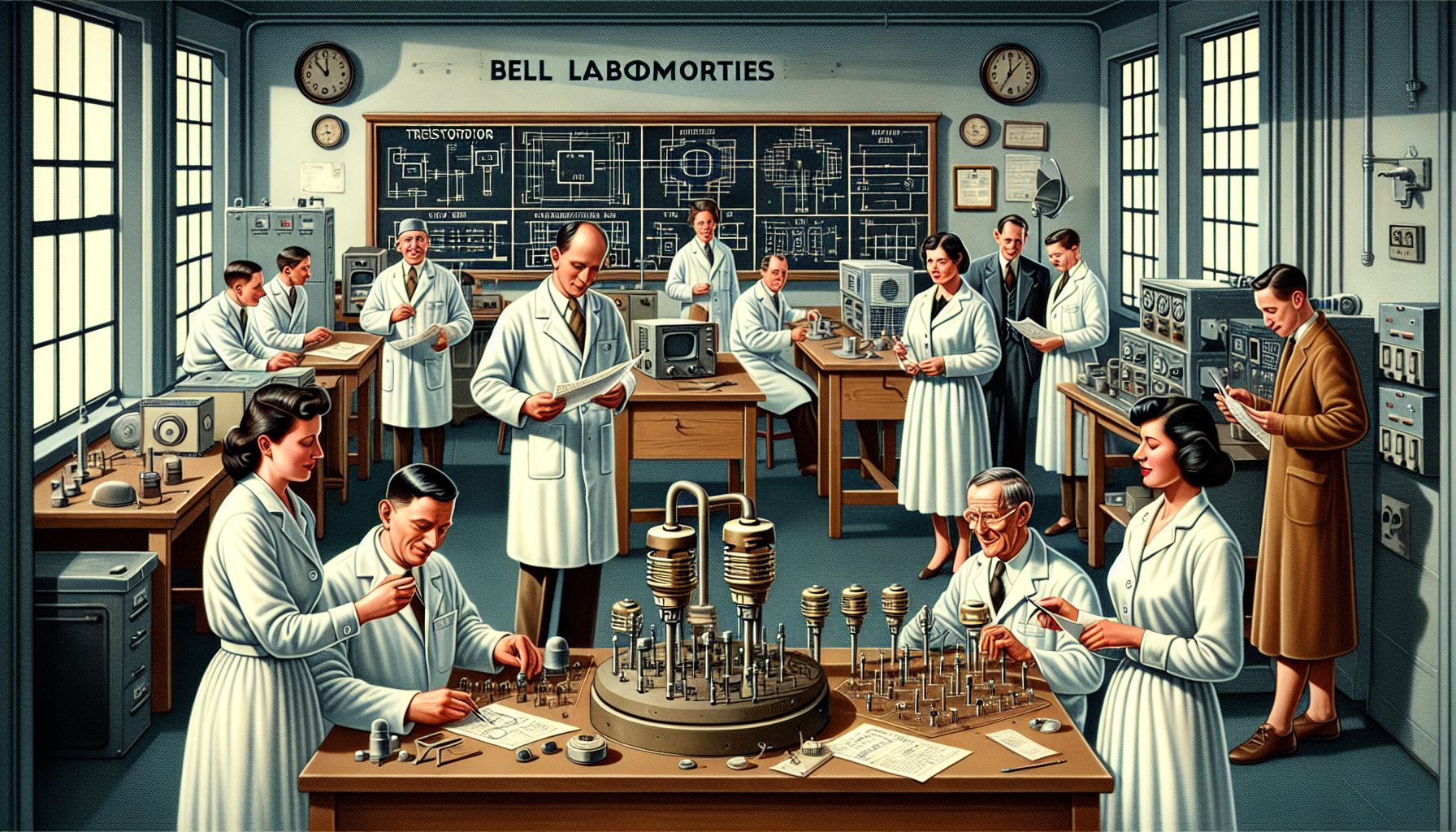📌 Let’s explore the topic in depth and see what insights we can uncover.
⚡ “Imagine a world without smartphones, computers, or even television. This was reality before the revolutionary creation in 1947 at Bell Labs—the humble transistor!”
Are you a technology enthusiast who loves to explore the history of significant inventions? Or perhaps you’re a science student seeking to delve deeper into the world of semiconductors? Well, you’re in the right place! In this post, we’ll journey back to the mid-20th century, to the birthplace of the transistor at Bell Labs in 1947. This groundbreaking invention, which dramatically altered the course of technology and society, is as fascinating as it is influential. Without a doubt, the transistor is one of the most crucial inventions in human history. It sits at the heart of virtually all electronic devices, from computers and smartphones to satellites and medical equipment. But how did it come to be? What were the challenges and triumphs that marked its invention? Let’s dive into the riveting tale of the invention of the transistor.
🧪 Setting the Stage: A World Before Transistors

Unveiling the Birth of Transistor at Bell Labs, 1947
Before transistors, the world relied heavily on vacuum tubes for electronic operations. These tubes were bulky, unreliable, and consumed a lot of power. They were prone to overheating and had a relatively short lifespan. This made the technology of the era quite cumbersome, and there was a pressing need for something more suitable, reliable, and compact. Bell Labs, a world-renowned research institution, took up the challenge. The task of inventing a smaller, more efficient alternative to vacuum tubes was assigned to a team of three brilliant scientists: William Shockley, John Bardeen, and Walter Brattain.
🧩 The Breakthrough: Inventing the Transistor
The trio began their work in earnest, facing numerous setbacks and failures as they experimented with semiconductors, materials that had the potential to control electric current. It was a daunting task, akin to navigating a ship in uncharted waters. But they pressed on, propelled by their determination and the knowledge that their work could revolutionize the world. The breakthrough came in December 1947. Bardeen and Brattain, working without Shockley, developed what they termed a “point-contact transistor.” The device was a small piece of germanium (a semiconductor material) with gold contacts. It was a far cry from the cumbersome vacuum tubes, and it worked! The device could amplify a signal, much like a vacuum tube, but with much less power and in a much smaller package. The transistor was born.
💡 The Impact: A Revolution in Electronics
The impact of the transistor on the world of technology and electronics was nothing short of revolutionary. Imagine a world where computers are the size of entire rooms, and radios are as big as modern-day refrigerators. That was the reality before the transistor. With the advent of this small, efficient device, electronics became smaller, cheaper, and more efficient. The transistor paved the way for the miniaturization of electronic devices. Computers shrank from room-sized behemoths to portable laptops and pocket-sized smartphones. Radios and televisions became household items, and the age of personal electronics dawned. The transistor also became a fundamental building block in the world of digital electronics. It’s at the heart of integrated circuits and microprocessors, leading to the development of modern computing and digital communication.
🏆 Recognition and Legacy: Nobel Prize and Beyond
The invention of the transistor was not only a technological triumph, but it also earned the trio of inventors the highest accolade in the world of science. In 1956, Bardeen, Brattain, and Shockley were awarded the Nobel Prize in Physics. Their invention was recognized for its “semiconductor effects,” a nod to the fundamental role of semiconductors in the operation of the transistor. The legacy of the transistor lives on today, more than 70 years after its invention. It continues to be a cornerstone of modern electronics. Without it, we wouldn’t have the digital world we know today. Our smartphones, computers, and all the conveniences they offer owe their existence to this remarkable invention.
🧭 Conclusion
The invention of the transistor at Bell Labs in 1947 was a watershed moment in the history of technology. It marked the end of the era of bulky, inefficient vacuum tubes and kick-started the age of miniaturized, efficient electronics. The transistor, a tiny device with a massive impact, transformed the world and continues to shape our digital reality. So, the next time you pick up your smartphone or sit down at your computer, spare a thought for the humble transistor. Behind the sleek design and powerful capabilities of these devices lies the legacy of a trio of scientists who dared to envision a better, more efficient world of electronics. In the words of John Bardeen, “The transistor was not invented—it was discovered.” This discovery continues to influence the world, underpinning the digital age and propelling humanity into the future.
🤖 Stay tuned as we decode the future of innovation!
